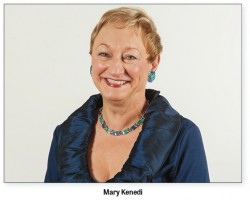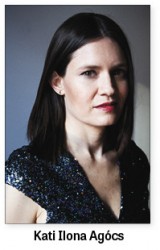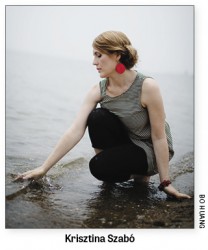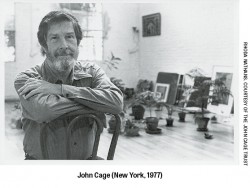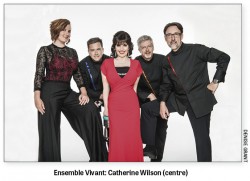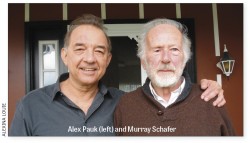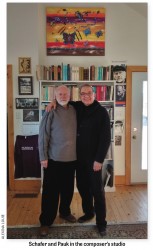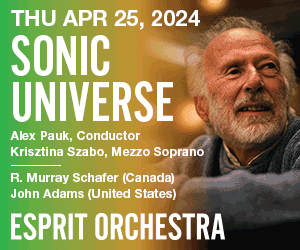Podcasting Comes to Conversations TheWholeNote
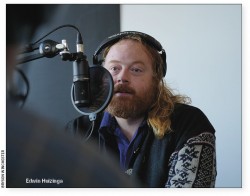 It’s amusing to look back at the moment in 2003 when after eight years of ad-hoc existence we incorporated and decided to name the parent company of this magazine Wholenote Media Inc. Prescience or hubris? It’s hard to say. After all, back then the fax machine was at the cutting edge of communications technology, we didn’t have a website, Facebook, Twitter and YouTube didn’t exist, and Bell Canada was seriously contemplating suing for trademark violation anyone who referred to the relatively new phenomenon of the Internet as “the web.”
It’s amusing to look back at the moment in 2003 when after eight years of ad-hoc existence we incorporated and decided to name the parent company of this magazine Wholenote Media Inc. Prescience or hubris? It’s hard to say. After all, back then the fax machine was at the cutting edge of communications technology, we didn’t have a website, Facebook, Twitter and YouTube didn’t exist, and Bell Canada was seriously contemplating suing for trademark violation anyone who referred to the relatively new phenomenon of the Internet as “the web.”
As wild as the ride has been since then, it’s immensely reassuring to see the re-emergence, out of the madding, digital, multimedia gadget- and platform-driven crowd, of an electronic medium which, if not as old as the hills, certainly predates most of the hyper-kinetic information-dispensing media that compete for the attention of our eyes, ears and app-posable thumbs.
I’m referring of course to the latest incarnation of what used to be good old-fashioned talk radio, where hosts and guests sit and bicker amiably over things they care about – and you and I get to overhear the conversation, while we go about our business, all senses other than our ears, and maybe our minds, undistracted from cooking, or driving or jogging, or whatever else it is that we need to continue doing.
And what, you ask, is this greatest new medium since CBC Radio? Podcasts, of course. And the main point of this story is to tell you that TheWholeNote is now on the podcasting bandwagon and we’d love to have you along for the conversational ride!
Conversations <at> TheWholeNote Podcasts:
All you have to do is find your way to the Conversations <at> TheWholeNote podcast page, where you will not only discover our most recent episodes for your listening pleasure, but will also be able to scroll through audio-only versions of almost three dozen video interviews conducted over the past four seasons.
Who’s on first? Edwin Huizinga:
The most recent guest in our studio was violinist Edwin Huizinga, who graces the cover of this issue, and who not only brought two violins to the interview but even contrived to play one of them during a wide-ranging half-hour conversation. He spoke of his work as a period violinist with ensembles like Tafelmusik and Cleveland-based Apollo’s Fire. And about his working relationship with California-based steel guitarist William Coulter, with whom he has just recorded an album, Fire and Grace, that doesn’t so much break the boundaries of classical, folk and world music as allow the two players to wander from realm to realm. Other bases touched included Huizinga’s intimate concert series, Stereo Live, co-curated with COC violist Keith Hamm at Campbell House; his involvement with San Francisco-born “Classical Revolution” that seeks to take the music out of its traditional venues; touring Versailles with Opera Atelier; all this and more in a freewheeling chat with an individual for whom clearly “serious” is not a description of one type of music or another but rather a description of the kind of love a listener or player brings to the experience.
Here’s just a taste from the podcast itself:
WholeNote: You do a lot of period playing and a lot of other stuff. Do you have two violins for that?
Edwin Huizinga: Always. Nowadays I just always perform and tour with a double case. At the moment I’m performing about 50 percent on my modern violin and about 50 percent on my Baroque violin. That’s really exciting for me.
WN: The recent recording you did with William Coulter, guitarist – steel string guitarist, is that steel and gut [strings] or steel and… .
EH: That’s steel and steel…in that project, even though we are exploring music from around the world, Baroque music, classical, Celtic, Argentinian, Bulgarian, I’m performing that almost exclusively on my modern violin. The project was sparked in Cleveland of all places; we met because a really great friend and colleague of mine, Jeannette Sorrell, who is the artistic director of Apollo’s Fire, actually suggested that Bill work with me on a project that he was directing in Cleveland with Apollo’s Fire…eventually a YouTube video of me jamming with Mike Marshall was the ticket to Bill, who had not met me yet, understanding that I could break the boundaries of classical music and really get into fiddling and bluegrass…Then this past year we’ve basically dedicated a lot of time together to record this album of all kinds of classical and folk repertoire and it’s coming out in just a couple of weeks.
Ivars Taurins, conductor, Tafelmusik Chamber Choir: this conversation, October 11, 2016, was occasioned by the fact that the Tafelmusik Chamber Choir is celebrating its 35th anniversary, kicking things off with a concert right at the beginning of November (November 2 to 6) that draws on repertoire and composers that have made a mark on the choir over the years. The charm of this kind of chat is that it can range far and wide, as this one did. Why violists make good conductors, if indeed they do; how Taurins’ “Herr Handel,” who conducts Tafelmusik’s renowned annual sing-along Messiah at Massey Hall, came into being (thank you, Ottie Lockey!); the Choir’s and Tafelmusik’s ongoing relationship with the Montreal Symphony Orchestra’s Kent Nagano; pros and cons of memorization; the undervaluing of choristers (musicians who sing together), especially in a world that gears post-secondary music education towards the idea that success consists of a solo concert career.
Again, just a taste from the podcast:
WholeNote: …We’re going to need to wrap, so coming back to violists is a good way to do it since your final concert is Mozart’s C Minor Mass, which is you and the orchestra fully joined in a work by another great violist.
Ivars Taurins: Yes, exactly – and it’s such an incredible work in terms of a composer who again is looking back, inspired by Bach’s B-Minor Mass and by Handel’s oratorios and counterpoint, so it’s a fascinating work to dive into. I’ve sunk into that work a number of times and it was a great opportunity in this anniversary season to pay tribute to it.
WN: And before that in February you a have program devoted completely to Bach.
IT: Completely…and it explores the choral works, elements of the choral works, that [audiences] don’t know. Again, it’s the tip of the iceberg. We get to hear the great cantatas, we know the great choruses, but of the hundreds of cantatas he did write – well, over a hundred – and the church cycles he composed, there are so many hidden gems….
Guy Fawkes Day Elijahs, with Stephanie Martin and Noel Edison:
We previewed this interview extensively in the October 2016 issue of the print magazine, as two conductors of major choirs, both in their 20th seasons with the choirs in question, compare notes on (entirely coincidental) November 5 Toronto performances of Mendelssohn’s Elijah.
Needless to say, there’s far more in the conversation than what found its way into print!
Sondra Radvanovsky: Beyond that, a stroll through the audio archive is a delightful trip down memory lane full of insights and delights (while you wait for the lasagna, or ponder whether, sitting on the 401, it is indeed worth the drive to Acton). Take this snippet from our October 2015 conversation with opera superstar Sondra Radvanovsky in her Caledon home. It was interesting enough at the time, but having heard her triumphant Norma at the COC just last week, it’s just that little bit more interesting, this time around.
WholeNote: …And then I heard you, very memorably in the lobby at Classical 96, when they launched…and what was astounding was this ability, it doesn’t seem to matter what the size of the room is, to do your pianissimo the same way in the Four Seasons as in a room like that…the power is astounding and beautiful and it’s very unusual. I have wished to be able to be in the seat I was in – for the Roberto Devereux it was right in front by the orchestra and I wished I could have, during the really quiet moments, parachuted to the very back of the fifth balcony because I had the sense it would be the same….
Sondra Radvanovsky: Spinning the pianissimi.
WN: Spinning the pianissimi, yes that’s it.
SR: There’s a real technique to singing piano. And I think I learned a lot of that from listening to the greats. Montserrat Caballé. Because you have to always keep the sound moving forward. Because you can sing piano but block off the air and it goes probably about two rows up. And the real trick is in the placement of the voice; what we say, keeping it in the mask right here. Because if you keep it spinning with air it will reach the very back of the hall but still sound just like a filament….
To listen to our podcasts, you have two options: you can listen via a website (streaming), or you can use a podcast app on your phone, tablet or computer to subscribe and have the podcasts delivered to your device as they happen. The WholeNote podcast is available to stream by visiting www.thewholenote.com/podcasts – or on all your favourite podcast services including iTunes, Google Play, Stitcher, BluBrry, PocketCasts and more.
David Perlman can be reached at publisher@thewholenote.com.


